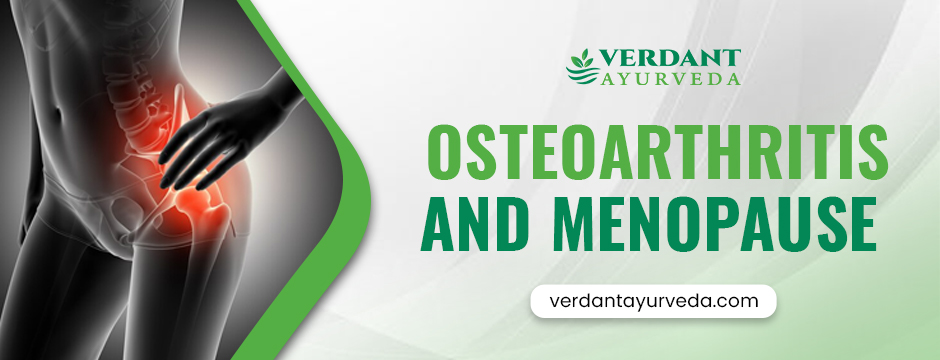
Osteoarthritis (OA) is a degenerative joint disease that affects millions worldwide, with women disproportionately impacted, especially after menopause. Characterised by joint pain, stiffness, and reduced mobility, OA significantly impairs quality of life. While ageing and mechanical wear and tear are well-known contributors, emerging research highlights the pivotal role of hormonal changes, particularly the decline in estrogen, in the development and progression of OA in women.
Estrogen, a primary female sex hormone, is integral to maintaining joint health. It influences cartilage integrity, bone density, and inflammatory responses within joints. The transition into menopause brings about a significant drop in estrogen levels, correlating with an increased incidence of OA among postmenopausal women. This blog delves into the intricate relationship between hormones and osteoarthritis in women, exploring current research findings, the biological mechanisms at play, and potential therapeutic approaches.
Understanding Osteoarthritis and Its Prevalence in Women
Epidemiological studies have very consistently shown that women in general have a higher frequency of OA than men with increasing age beyond 50. This disparity may be attributed to additional factors beyond mechanical wear, one of them being hormonal changes affecting the increased risk in women.
The Role of Estrogen in Joint Health
Estrogen contributes to the production of collagen, a protein that supports joint cartilage, keeping joints flexible and cushioning them against impact. Estrogen receptors are found in many joint tissues, including cartilage, bone, and synovial linings. This indicates that estrogen directly acts on the joints.
It maintains the cartilage structure by stimulating the production of proteoglycans and collagen. Furthermore, it influences bone remodelling to maintain a balance between bone formation and bone resorption.
Menopause and the Surge in Osteoarthritis Risk

Estrogen levels in women that were menopausal have been linked with increased odds of developing OA. Its deficiency was found to cause increased cartilage degradation and loss of subchondral bone, leading to the progression of OA. In animal models, ovariectomy induces cartilage damage and makes the joints more prone to OA, whereas estrogen administration diminishes cartilage loss and maintains joint integrity.
In human beings, postmenopausal women predominantly complain of joint pain and stiffness, both symptoms of Osteoarthritis and menopause. This condition somehow hints at the hormonal changes at play that are detrimental to joint health during menopause.
Lifestyle Strategies for Joint Health
Adopting lifestyle measures in support of joints is a must, more so for women approaching or undergoing menopause, given the hormonal influences on Osteoarthritis in Women.
- Regular Exercise: Performed correctly, low-impact activities promote the strengthening of muscles around joints and improve their flexibility and hence pain reduction. For instance, walking, swimming, or yoga.
- Balanced Diet: Foods that are anti-inflammatory—such as fruits, vegetable, whole grains, and omega-3 fatty acids—go a long way in managing inflammation together with joint health.
- Weight Management: Being in good physical shape lessens the wear on weight-bearing joints that may cause the advancement of OA.
- Taking Adequate Amounts of Calcium and Vitamin D: These two nutrients go a long way in bone health, putting a stop to osteoporosis, which in turn contributes to joint problems.
- Stress Reduction: Stress reduction through meditation, mindfulness, and the like may have an indirect effect on joint health.
Beyond Estrogen: Other Hormonal Influences
Estrogen is often the focus when we talk about hormonal effects on joint health. However, other hormones may have their effects on joint health. Another female sex hormone that has been hypothesised to maintain cartilage volume by suppressing matrix metalloproteinase production, enzymes that break down cartilage.
In addition, testosterone and other androgens have more or less been implicated in cartilage metabolism, with quite uncertain roles for them. The interaction of different hormones and their conjoint effect on joint health currently forms an active research area.
Final Words
The intricate relationship between hormones and osteoarthritis in women underscores the importance of a comprehensive approach to joint health. While hormonal changes, particularly the decline in estrogen during menopause, play a significant role in OA development, lifestyle factors and individualised medical interventions are equally crucial.
For women seeking natural and holistic strategies to support joint health, Verdant Ayurveda offers personalised & online wellness consultations that integrate traditional Ayurvedic principles with modern insights. Our approach emphasises balance, nutrition, and lifestyle modifications tailored to individual needs. Explore our offerings on our website to embark on a journey toward optimal joint health and overall well-being.
